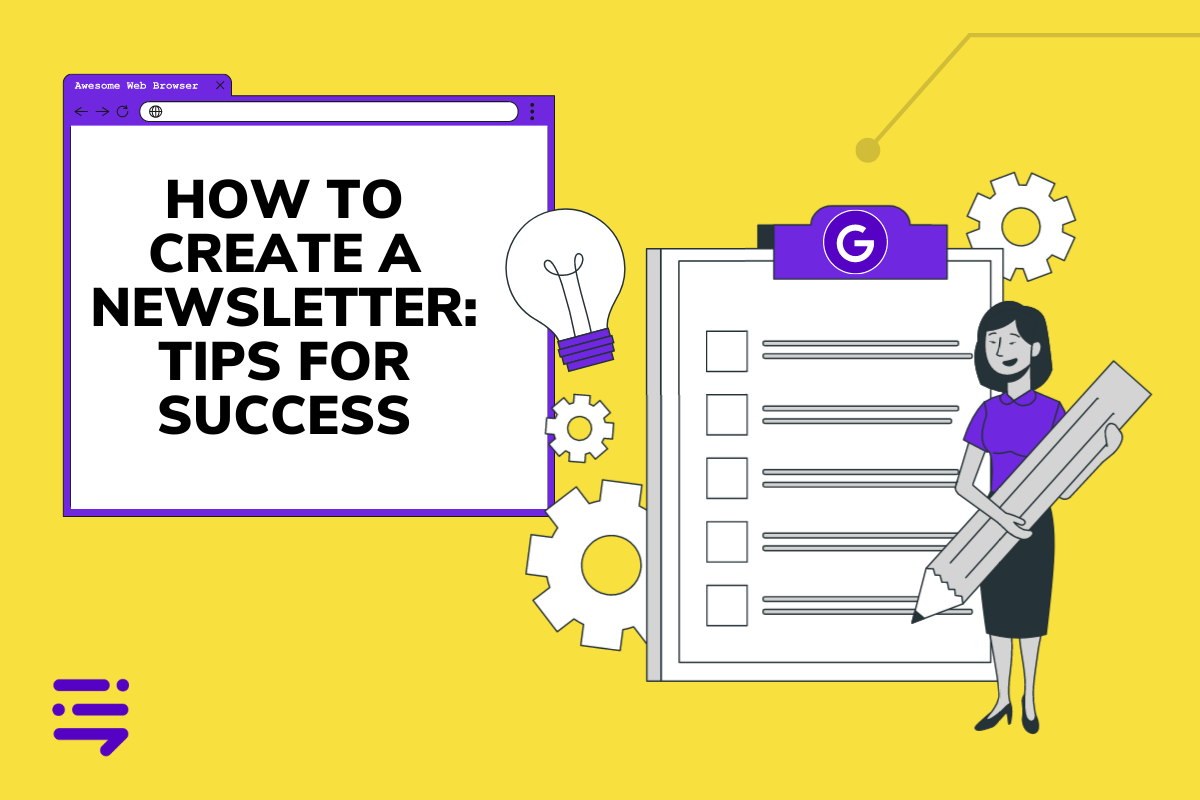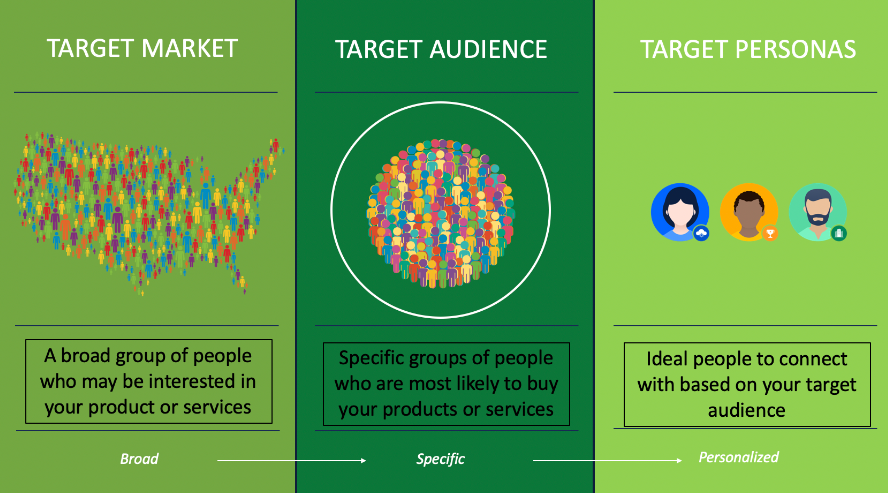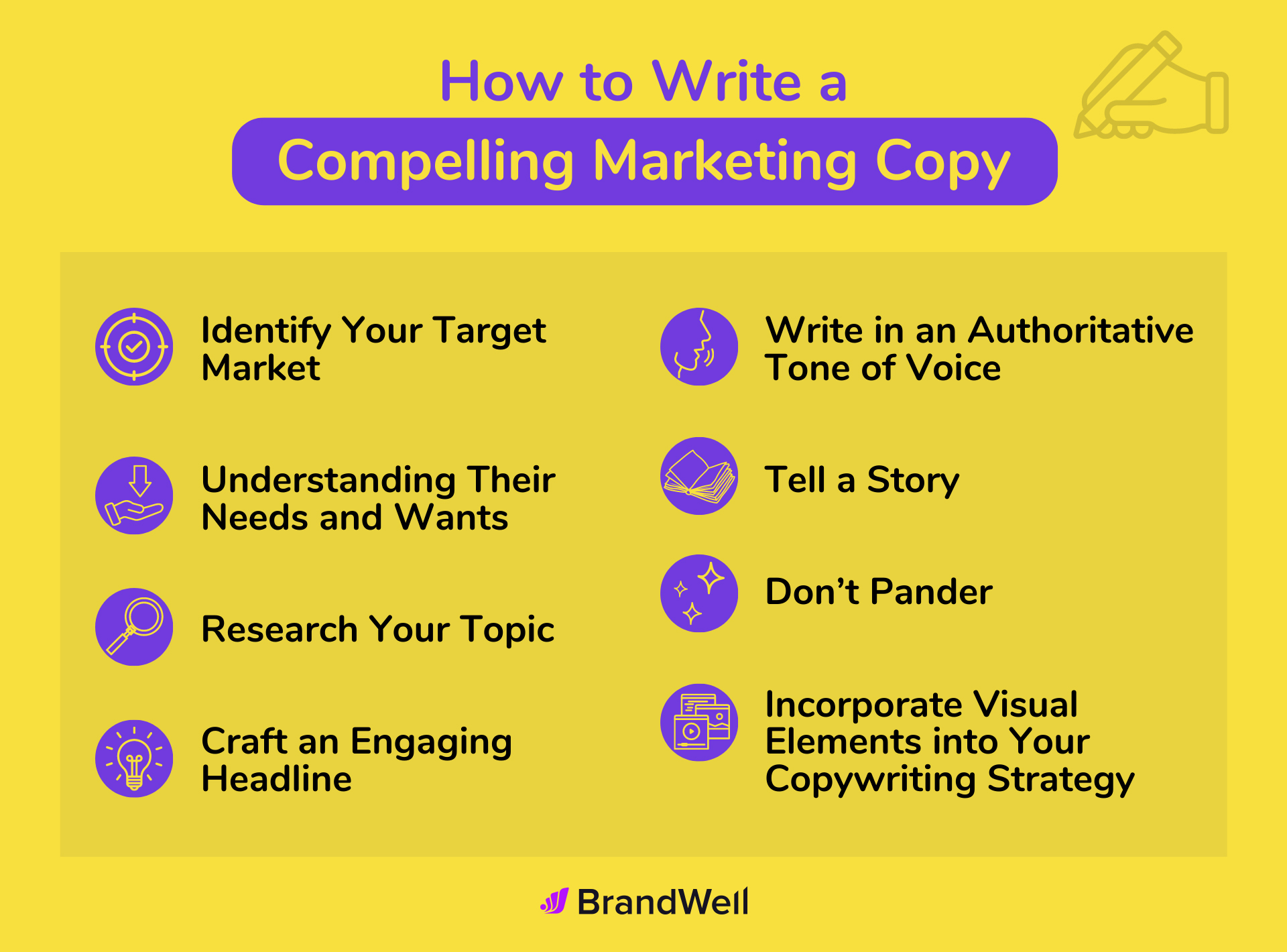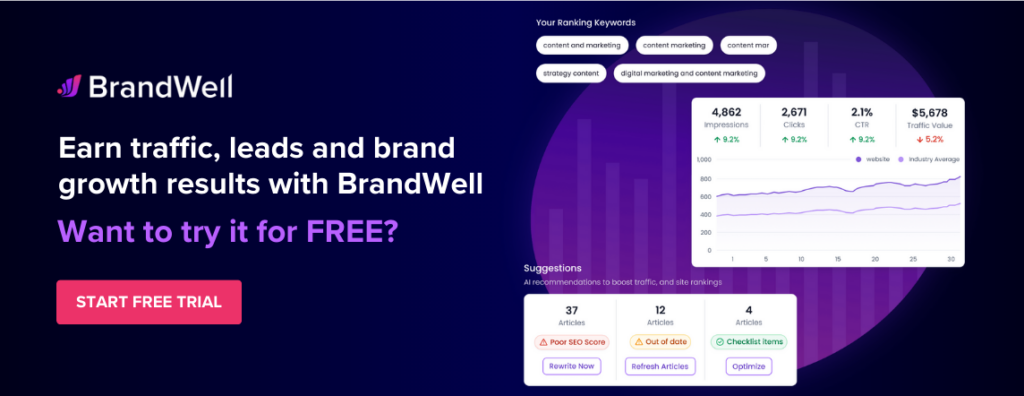Discover top guides, trends, tips and expertise from AIO Writers

Among all marketing strategies, email marketing offers one of the highest returns on investment — up to $42 for every dollar spent!
The purpose of email marketing is to nurture leads, build relationships with them, and eventually turn them into paying customers.
The humble-but-mighty newsletter is one way to accomplish all of these goals.
Of course, it can be a challenge to put out issue after issue, all while competing with mountains of clutter in a recipient’s inbox.
That’s why, in this blog post, we’ll explore the key elements of a great newsletter — including how to create a newsletter that your audiences will love and look forward to opening.
By the end of this post, you’ll be able to make newsletter templates that your subscribers will eagerly anticipate. So let’s dive in and discover how you can take your newsletter to the next level.
Table Of Contents:
- What is an Email Newsletter?
- Elements of a Successful Newsletter
- Understanding Your Audience
- How to Create a Newsletter Your Audience Will Love
- Best Practices in How to Create a Newsletter That Drives Results
- Creating Your First Draft
- Conclusion
What is an Email Newsletter?
An email newsletter is an effective way to keep in touch with your audience and build relationships. It’s a great tool for delivering informative content, building brand awareness, and staying top-of-mind with customers.
An email newsletter can be sent regularly or as part of an event or promotion. It typically contains information about the company’s products, services, news updates, special offers, upcoming events, and more.
The purpose of an email newsletter is to offer meaningful content that will keep your audience engaged and enthusiastic about what you are offering.
Now let’s look at what makes email newsletters effective in accomplishing these goals.
Elements of a Successful Newsletter
An effective email newsletter should have a few key elements to be successful.
- A compelling subject line – Your subject line should grab attention and make people want to open your message. Use action words such as “Discover” or “Unlock” when appropriate.
- Engaging content – Newsletter articles should be relevant to your audience. Include helpful tips, interesting facts, or stories related to your industry/products/services.
- A bold, vivid CTA – Make your CTA stand out from the rest of the text by using distinctive colors and bigger fonts. This should motivate readers to act after reading your message (e.g., actions might include joining an online seminar, reading a blog post, or even making a purchase).
- Social media buttons – Don’t forget to add social media icons so recipients can easily share your message with their networks. This helps spread awareness about your brand even further.
The most essential element in a great newsletter is the material itself, which should be worth the time of your subscribers. Content can include informative articles, helpful advice, or case studies showing how your product has helped a customer.
Furthermore, skillful writing makes email newsletters attractive to your readers.
Design is another important factor that affects the readability of your email campaigns. Create a simple design that looks professional and appealing, yet is still comfortable to the eye. This will help readers remain engaged with your material as they go through it.
To ensure that your design looks great no matter where it’s viewed (desktop or mobile), use responsive newsletter templates that adjust automatically based on screen size.
A strong and prominent CTA in your newsletter will prompt readers to take the desired action. “Take the plunge” or “Act now” pushes your reader to take action after reading your email bulletin. A good CTA will also encourage people to sign up if they are not yet subscribers.
Creating an effective newsletter requires careful consideration of these elements. Having taken into account the components of a successful newsletter, let’s dive into the fun part — how to create a newsletter that resonates with your audience.

Screenshot from Tidio
Understanding Your Audience
The first step in learning how to create a newsletter is to know who you are writing for. Knowing your audience is crucial when writing a newsletter because it allows you to tailor your content and messaging to effectively engage your subscribers.
To hit the mark with content, you’ve got to get into your readers’ shoes and find out what interests them and what challenges they face.
Here are some reasons why understanding your audience is important:
Relevance: Understanding your audience helps you create content that is relevant to their interests, needs, and preferences. By knowing their demographics, behaviors, and preferences, you can develop newsletter content that speaks directly to their concerns and provides value. This increases the chances of capturing their attention and motivating them to take action.
Personalization: A personalized newsletter is more likely to grab the attention of your audience. By knowing your audience, you can customize the content, tone, and style of your newsletter to match their preferences. This personalized approach creates a stronger connection and fosters engagement with your readers.
Effective communication: Different audiences respond to different communication styles and tones. Knowing your audience helps you choose the appropriate language, tone, and style that will resonate with them. For example, if your audience consists of professionals, a more formal and business-oriented tone may be appropriate. On the other hand, if your audience is younger and more casual, a conversational and informal tone may be more effective.
Addressing pain points: Understanding your audience’s challenges, pain points, and desires allows you to address them directly in your newsletter. By offering solutions or valuable insights, you position yourself as a trusted resource and increase the chances of converting readers into customers.
Call-to-Action (CTA): Every newsletter aims to prompt a specific action from the readers, such as making a purchase, signing up for a webinar, or downloading a resource. Knowing your audience helps you craft a compelling CTA that aligns with their needs and motivations, increasing the likelihood of them taking the desired action.
Building relationships: When you understand your audience, you can foster a sense of connection and build long-term relationships with your readers. By consistently delivering valuable and relevant content, you establish yourself as a reliable source of information, which can lead to increased loyalty, brand advocacy, and repeat business.

Screenshot from Search Engine Journal
6 Ways to Know Your Audience
How to create a newsletter that your subscribers will actually read? It all starts with these steps:
Define your target audience: Start by clearly defining the specific demographic, psychographic, and behavioral characteristics of your target audience. Consider factors such as age, gender, location, occupation, interests, values, and purchasing behavior. The more detailed and specific you can be, the better.
Conduct market research: Use a combination of qualitative and quantitative research methods to gather information about your target audience. This can include surveys, interviews, focus groups, social media listening, website analytics, and industry reports. The goal is to gather insights into their needs, preferences, pain points, and motivations.
Create buyer personas: Develop buyer personas, which are fictional representations of your ideal customers. Based on your research, identify common characteristics, behaviors, and goals of your audience segments. Give each persona a name, demographic information, and a backstory to make them more relatable and easier to understand.
Analyze existing customer data: Examine your existing customer data, such as purchase history, interactions, and feedback. Look for patterns and trends to identify common traits and preferences among your current customers. This data can provide valuable insights into your target audience.
Monitor social media and online communities: Actively monitor social media platforms and online communities where your target audience engages. Pay attention to the topics they discuss, the language they use, and the challenges they face. This helps you stay up-to-date with their interests and concerns.
Engage with your audience: Engage with your audience through various channels, such as social media, email, or customer support. Encourage feedback, ask questions, and listen to their responses. This direct interaction allows you to gain deeper insights into their needs and preferences.
By following these steps, you can get valuable information about your audience and use that information to create persuasive content for your newsletter.
How to Create a Newsletter Your Audience Will Love
Is your current newsletter languishing in inboxes?
Crafting an effective newsletter requires careful planning, attention to detail, and the right tone for your target audience. Here’s a step-by-step guide on how to create a newsletter that your readers will look forward to.
- Identify the goals and objectives of your newsletter to determine how best to engage with its intended audience.
- Research topics and keywords that align with your target audience’s interests and needs.
- Create an editorial calendar to plan content for upcoming issues.
- Develop a template for each issue that includes branding elements, navigation, images, and content areas like headlines, body copy, and calls-to-action (CTAs).
- Write compelling content using SEO best practices such as including keywords in titles and headers, adding links within the text, including visuals where appropriate, taking advantage of white space, and ending with a strong CTA.
- Optimize newsletters for mobile devices since most people will be reading them on their phones or tablets.
- Test all emails before sending them out to make sure they look great on different email clients and browsers.
- Send out newsletters at optimal times depending on what works best for your target audience.
- Monitor the performance of each issue and use analytics to improve future campaigns.
Now let’s break down these steps, starting with how to choose a suitable newsletter template.

The ideal width for email newsletter templates is 600px, according to OptinMonster.
Choose a Suitable Template
When selecting an email newsletter template, consider both the aesthetic impact and ease of use. A visually appealing yet simple design will draw readers in and encourage them to read through the entire message, while easy-to-navigate content makes sure that readers can quickly find what they’re looking for.
Here are some tips on how to select an effective template for your current newsletter:
- Start by selecting a layout with plenty of white space. Minimizing distractions such as clutter and images will help readers focus on the key points of your content. The font should also be readable at different sizes, so choose one that looks good at all sizes from small mobile devices up to desktop monitors.
- Ensure you have a sufficient number of segments in your design so that the content can be divided into rational sections without overloading each page or making it appear chaotic. Your template should also include easily identifiable headings so readers know which section they’re reading before diving into the text.
- Additionally, think about adding interactive elements like buttons or clickable images if you want people to take action after reading through your newsletter. This could be anything from signing up for a webinar or downloading an ebook.
Craft Engaging Content
Your message is the most important part of your newsletter. Is it speaking to your audience? Does it help them solve a problem?
Start by researching the topics that appeal most to your target audience. Look at industry trends, as well as current events or hot topics related to their field of interest. This can help give you ideas for creating relevant content that resonates with them.
Focus on crafting content that holds the attention of readers from beginning to end. Use catchy headlines and captivating visuals such as images or videos to draw readers in right away and make them read through the entire article.
Storytelling techniques like anecdotes or case studies are great for making people feel connected with the material they’re reading. This will encourage them to stay throughout the piece rather than skim over it quickly.
Lastly, don’t forget about SEO when crafting content. Include targeted keywords throughout your newsletter so search engines would pick up on it and rank it higher in results pages when people search for those terms online.
By following these tips, you’ll be able to craft engaging newsletters that your subscribers will enjoy. They will look forward to receiving them each time one lands in their inboxes.

Keep Them Hooked With Visuals
Adding images is one of the easiest ways to make your newsletter more appealing. Pictures keep readers interested when the heavy text starts to get boring.
Including pictures of people can also create a sense of connection between the reader and writer – something that’s especially important when trying to build trust with potential customers.
Videos are another great option for pulling audiences in. Videos give viewers a chance not only to hear but see what you have to say, which helps establish credibility faster than words alone.
Videos also give viewers access to information quickly when they don’t have time to read long articles.
Graphics such as charts and diagrams provide helpful visual representations of data points without having pages full of text. Charts make it easy for readers to understand complex ideas without having to skim through long paragraphs.
Finally, animation can help bring your newsletter to life. Instead of dull pieces of content, you will be able to create dynamic stories that will keep audiences hooked. This type of media has been proven to increase engagement levels significantly compared to traditional text.
Best Practices in How to Create a Newsletter That Drives Results
When creating email campaigns, there are several best practices you can follow to maximize their effectiveness. Here are some key recommendations:
Offer Value
Quality content should always come first when creating an email newsletter. People don’t want their inboxes flooded with advertisements, so try to include helpful blog posts or gems of wisdom that readers can benefit from. This will help make them feel like they’re getting something out of subscribing rather than just another piece of junk mail in their inbox.
Share industry insights, tips, how-to guides, case studies, or exclusive offers. Strive to be a trusted resource for your readers, positioning yourself as an authority in your field.
Write Engaging Subject Lines
Craft a compelling subject line that grabs attention and entices readers to open your newsletter. A strong subject line should be intriguing and be able to communicate the value or benefit readers will gain by opening the email.
Keep It Short and Sweet
Keep your newsletter content clear, concise, and scannable. Use short paragraphs, bullet points, and subheadings to make it easy for readers to quickly grasp the main points. Incorporate visuals such as images, infographics, or videos to enhance engagement.
Find the Right Balance Between Text and Visuals
Design is key to a successful email newsletter. It’s important to find the right balance between text and imagery, as well as the overall look of your newsletter. You want it to be eye-catching enough that people will actually open it but not too busy or overwhelming so they’ll stick around and read it.
If you opt not to add any images, make sure your message is concise and cuts straight to the point.
Consistent Branding
Branding consistency is the secret sauce that gives your newsletters a professional and polished look.
Customizing greetings, unsubscribe links, updating profile forms, uploading brand kits — all these small details play a huge role in maintaining consistent branding throughout your campaigns.
Use your brand colors, logo, and fonts to ensure visual cohesion and reinforce brand recognition. Consistent branding establishes credibility and helps readers identify and connect with your brand.
Personalize with Segmentation
Personalization is the key to successful email marketing. Subscribers engage more with content that feels like it’s written just for them.
So, how do you create personalized content?
Start by segmenting your email list based on interests and behaviors.
Campaign Monitor suggests that segmentation can lead to a 760% increase in revenue — imagine what that could do for your business.
By segmenting based on customer behavior patterns, you can send the right message at the right time, like having a personal conversation with each subscriber.
- Demographic segmentation: Divide your audience by age, gender, location, etc., then tailor content accordingly.
- Purchase behavior segmentation: Group customers based on their past purchases or browsing history.
- Email engagement segmentation: Categorize subscribers who regularly engage with emails separately from those who don’t.
Once you have segmented your email list, use dynamic content to tailor your message to each segment. Don’t forget to include the subscriber’s name and other personal details.
By crafting personalized content, you’ll see higher open and click-through rates.
Create a Sense of Urgency
Include a clear and compelling call to action in your newsletter. Whether it’s directing readers to make a purchase, sign up for a webinar, download a resource, or follow you on social media, make the CTA prominent and easy to follow. Use actionable language and create a sense of urgency when appropriate.
Test Different Versions
Once you have everything designed and written up, test your newsletter. Send emails out yourself and have someone else take a look at them on both desktop computers and mobile devices before sending out anything official. This ensures that images load properly, no links are broken, and there are no design issues across different platforms.
Additionally, A/B testing can also be useful for determining what types of emails get opened more often or which CTA placements perform better than others – giving you valuable insights into how to tweak your newsletter before publishing them. Experiment with different elements of your newsletter, such as subject lines, content formats, visuals, and CTAs.
Optimize for Mobile
With nearly 60% of emails being opened on mobile devices, having a responsive template is essential for making sure your newsletters display properly regardless of the device type used by readers when viewing them.
Test your newsletter on different devices and email clients to ensure a seamless experience for all users.
Maintain a Consistent Schedule
Establish a consistent schedule for sending your newsletter. Whether it’s weekly, biweekly, or monthly, consistency helps build anticipation and trust with your readers. Stick to your schedule and deliver valuable content on a regular basis.
Remember, these best practices are not set in stone, and it’s important to adapt them to your specific audience and industry. Continuously analyze your results, gather feedback, and make adjustments based on what resonates best with your audience.
Creating Your First Draft
Now that you know how to create a newsletter that drives results, it’s time to write your first draft.
To help you out with this process, here are three of our favorite tools.
Grammarly
Grammarly helps you detect typos in your text by simply pasting it into their platform. It will then highlight words or phrases that have grammar errors, as well as suggest an alternative word to use instead. This tool also provides a readability score so you can see which sentences are hard or super hard to read — allowing you to replace them with simpler alternatives if needed.
Hemingway Editor
Hemingway Editor makes it easier for readers to digest your content by suggesting ways in which you can shorten long sentences and improve their structure overall. The app highlights complex words in yellow (which should be replaced) and difficult-to-read sentences in red (which should be simplified).
Additionally, it shows how many adverbs were used throughout the entire article – making sure that they don’t exceed a certain number per sentence.
BrandWell
If you are sending out newsletters every week, a content marketing automation platform like BrandWell can help you meet your deadlines — with plenty of spare time to do other marketing tasks. BrandWell now comes with generative AI so you can write any type of content you want — yes, even newsletters!
Here’s how you can create newsletters with AI fast:
It’s important to proofread AI’s work before sending out any newsletters. Give your first draft a full read, ensuring that your message is easy to understand and provides value to your reader.
Conclusion
Learning how to create a newsletter properly means you won’t have to waste time, money, and effort on emails that don’t get opened and read.
First, know your readers and know what they want. When you craft engaging content that resonates with them, use visuals to draw readers in, and choose the right template for your message, then you can create an email newsletter that will be appreciated by those who receive it.
With careful planning and attention to detail, anyone can learn how to create a newsletter that drives results.
The power of AI is now in your hands. Sign up with BrandWell today to automate your email newsletter creation process!

UNLOCK YOUR POTENTIAL
Long Headline that highlights Value Proposition of Lead Magnet
Grab a front row seat to our video masterclasses, interviews, case studies, tutorials, and guides.



